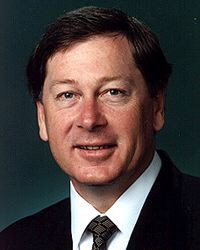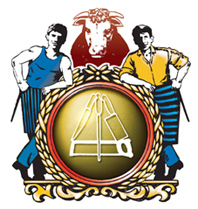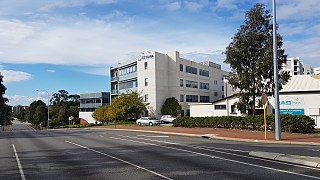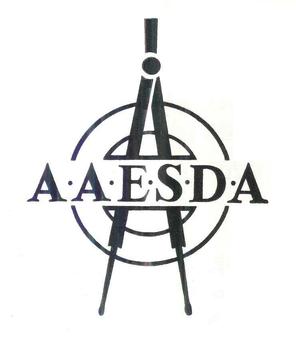Technical and further education or simply TAFE is the common name in English-speaking countries in Oceania for vocational education, as a subset of tertiary education. TAFE institutions provide a wide range of predominantly vocational courses.
Education in Australia encompasses the sectors of early childhood education (preschool) and primary education, followed by secondary education, and finally tertiary education, which includes higher education and vocational education. Regulation and funding of education is primarily the responsibility of the States and territories; however, the Australian Government also plays a funding role.

Archibald Ronald Bevis is an Australian Labor Party politician who served as the Member for Brisbane from 1990 to 2010. Bevis held a variety of ministerial, shadow ministerial, and parliamentary leadership positions.

The National Tertiary Education Union (NTEU) is an Australian trade union for all higher education and university employees. It is an industry union, and the only union working exclusively in the Australian university sector.

The Australasian Meat Industry Employees Union is an Australian trade union representing workers in the meat industry including in abattoirs, butchers, and smallgoods manufacturers.

The Australian Manufacturing Workers Union (AMWU), or more fully the Automotive, Food, Metals, Engineering, Printing and Kindred Industries Union, is an Australian trade union. The AMWU represents a broad range of workers in the manufacturing sector, as well as associated industries, and is affiliated to the Australian Council of Trade Unions.
The Australian Workers' Union (AWU) is one of Australia's largest and oldest trade unions. It traces its origins to unions founded in the pastoral and mining industries in the late 1880s and it currently has approximately 80,000 members. It has exercised an outsized influence on the Australian Trade Union movement and on the Australian Labor Party throughout its history.

The Queensland Council of Unions (QCU) is a representative, an advocacy group, or peak body, of Queensland trade union organisations, also known as a labour council, in the Queensland, Australia. As of 2020, 26 unions and 13 regional branches were affiliated with the QCU. The QCU represents unions covering around 350,000 Queensland workers. It is affiliated with the Australian Council of Trade Unions (ACTU). Its offices are located in the suburb of South Brisbane, Queensland. As a peak body for the Queensland trade unions, the objective of the QCU is to achieve industrial, social and political justice for Queensland workers. The management structure of the QCU is made up of a committee of management and an executive of representatives comprised from affiliated unions.
SA Unions is the peak body for trade unions in South Australia. It coordinates political, social, economic, and industrial campaigns between its affiliate members and implements the policies of the Australian Council of Trade Unions in South Australia.

The Australian Nursing and Midwifery Federation (ANMF) is the largest union in Australia, with 274,956 members in 2018. The union is run by nurses, midwives and assistants in nursing to advance the industrial, political and professional interests of its members.
CPSU, the Community and Public Sector Union is a national trade union in Australia. The union came was established on 1 July 1994 with the amalgamation of the Public Sector, Professional, Scientific, Research, Technical, Communication, Aviation and Broadcasting Union (PSU) with the State Public Service Federation (SPSF). The CPSU currently has around 41,000 members.

The Independent Education Union of Australia (IEU), with a current membership of over 75,000, is the federally registered industry union representing all employees working in non-government schools and institutions across Australia. Included in its membership are principals, teachers, and various categories of clerical, administrative, educational support staff and school services officers employed in primary and secondary schools; and teachers working in some private pre-school settings, Life Education Centres, business colleges and private English Language colleges.

Anne McEwen is a former Australian politician who served as a Labor member of the Australian Senate for South Australia from 2005 to 2016.

The New South Wales Teachers Federation is the registered trade union that covers New South Wales (NSW) public school teachers. The New South Wales Teachers Federation represents all teachers in NSW public pre-schools, infants, primary and secondary schools and TAFE institutes. Teachers working in public non school based teaching service positions and corrective services are also covered by the Federation.
The Queensland Teachers' Union is an Australian trade union with a membership of more than 46,000 teachers and principals in the Queensland Government's primary schools, secondary schools, special schools, senior colleges, TAFE colleges and other educational facilities. More than 96 per cent of eligible teachers are members. As well as protecting the rights and conditions of its members, the QTU also sees the promotion of public education as a major part of its role.
Together is a trade union covering workers in the public and private sectors in the state of Queensland, Australia. The largest areas of coverage is the state public sector, including clinical and administrative staff in Queensland Health, state schools and TAFE institutes, the Department of Communities and other departments. Other areas of coverage include universities, airline employees, private clinical pathology services, private and not-for-profit healthcare providers, and clerical and administrative staff across a range of industries.

The State School Teachers Union of W.A. (Inc.) (SSTUWA) is an Australian trade union. It represents teachers working in the Western Australian state school system, which includes public schools and TAFE institutes, and is affiliated with the federal Australian Education Union. It has been in continuous existence since 1898.

The Association of Draughting Supervisory and Technical Employees (ADSTE), originally known as the Association of Architects, Engineers, Surveyors and Draughtsmen of Australia (AAESDA), was an Australian trade union which existed between 1915 and 1991. It represented white collar and technical-grade employees in both the private sector and the public service.
The Federated Moulders' (Metals) Union of Australia (FMMUA) was an Australian trade union which existed between 1899 and 1983. It represented moulders – skilled tradesmen who fabricated the moulds for casting metal products in foundries. In spite of only organising within a single skilled occupation, which kept total membership low, the vital position of moulders in major industries such as mining, manufacturing and the railways, ensured that the union remained industrially powerful with a reputation for being highly militant.

Board of Bendigo TAFE v Barclay is a decision of the High Court of Australia.












